Something happened at the legendary Leadville mountain bike race in 2024 that could quite well be seen as a watershed moment for gravel racing. While the idea of using the best gravel bike tyres in larger volumes or even mountain bike tyres on drop-bar bikes is nothing new, Leadville 2024 set in motion the widespread adoption of mountain bike tyres for gravel. Which got me thinking… What is the best MTB tyre for gravel?
Traditionally a mountain bike race, Leadville 2024 saw riders like Dylan Johnson, Keegan Swenson, and Payson McElveen all riding either mountain bikes with drop bars, like Swenson’s Santa Cruz Highball or running gravel bikes that can already handle larger-volume tyres similar to the Allied Payson rides.
(Image credit: Logan Jones-Wilkins)
With my personal bike, a Rodeo Labs Trail Donkey, having tyre clearance for up to 2.25 inches in the front and rear, I began my experiment with mountain bike tyres. I had used them on my gravel bike once before, through the Colorado mountains, but the goal then had nothing to do with speed or racing. Instead, it was all about handling and grip as this backcountry classic mixes a lot of pavement with a lot of extra-large chunky gravel.
At that time, the assumption was that tyres like that were only good for the chunky stuff and slower at everything else. Fast forward to September 2025, and there is now tangible evidence that the best tyres for any gravel might be those big, wide mountain bike tyres, even if you want to go fast.
After 12 months of testing, you can read my key takeaways, if you’re thinking about running MTB tyres on your gravel bike, like me, in my full feature – along with reviews of six MTB tyres ideal for gravel biking below.
Six MTB tyres ideal for gravel – Ridden & Rated
Vittoria Peyote XC Race
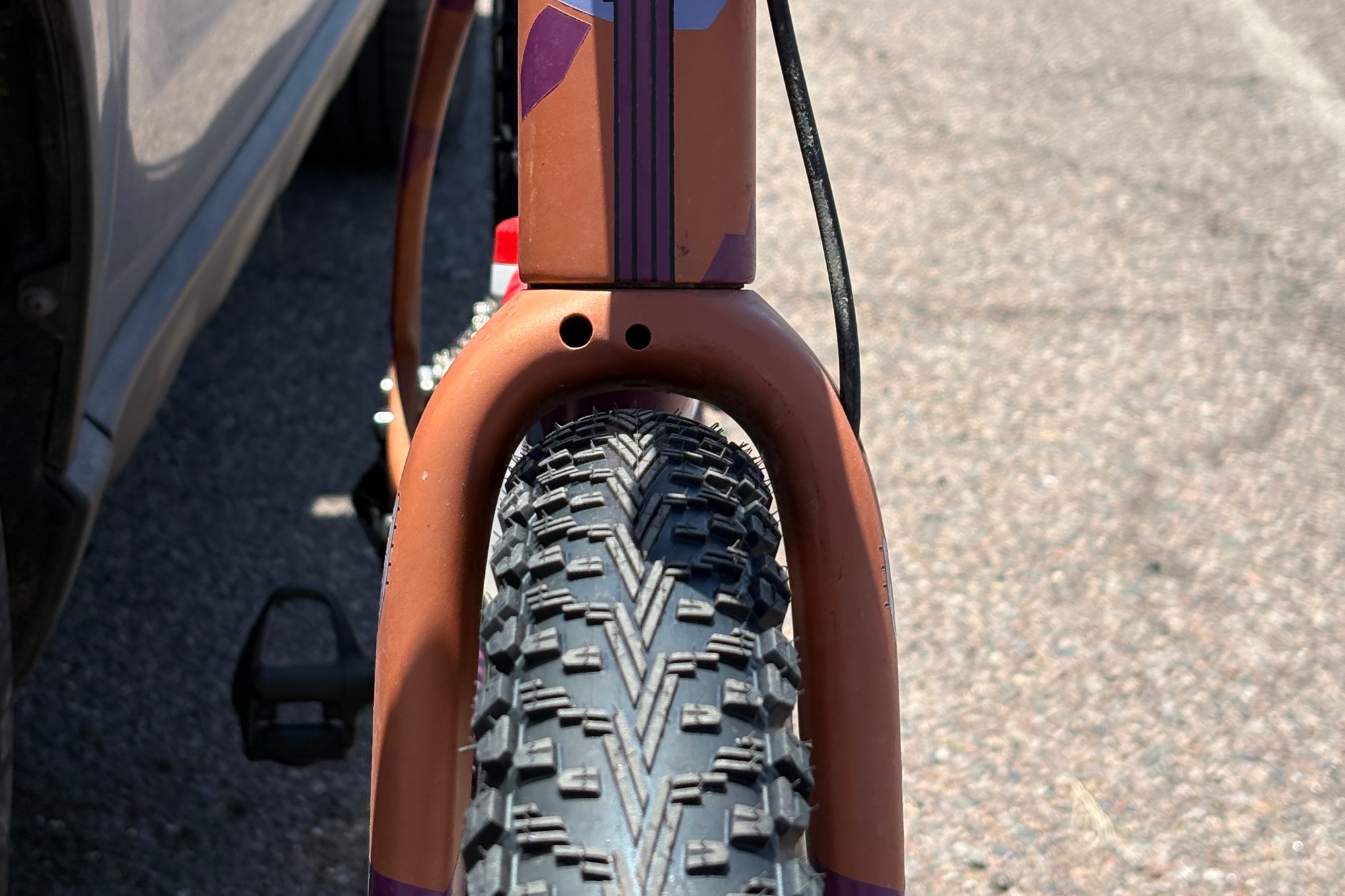
(Image credit: Logan Jones-Wilkins)
The Ride
As the lastest tyre In this test to be released, Vittoria has brought the very popular Peyote XC tyre to the 2.25 width, and it stormed to the top of my list with a wide range of strengths and very few weaknesses. While the top-three tyres on this test are all close, the Peyote is a true five-star premium option that, quite frankly, Vittoria needed after their previous XL gravel options left a lot to be desired. What sets the Vittoria Peyote apart from the other top tyres is its rare balance of a fast centre tread, quick-rolling rubber, and genuinely effective side knobs. By comparison, the Aspen ST delivers blistering speed down the centre with a strong compound, but lacks side knob bite for loose terrain. The Rekon excels in traction and stays quick over dirt, but can’t quite match the Peyote’s speed on hardpack and pavement.
There are many details worth highlighting about the Peyote—and perhaps I’ll expand on them in a future review—but what stands out most is how confidently it “bites” at the right moment, the ultimate test of a true race tyre. In gravel racing, traction is a knife-edge: too little, and the tyre won’t hook up, sliding unpredictably through corners and forcing either crashes or caution. Too much and oversized knobs increase drag and rolling resistance.
Skilled riders can finesse traction on sub-optimal treads, but great tyres make that balance easier. The Peyote does just that, offering speed-focused shaping while still managing reliable grip in turns. For most riders, it’s the best tool for mastering that fine line of traction. Add sharp looks, confident handling on wet terrain, and hassle-free setup, and the Peyote stands as the gold standard among the tyres tested.
Verdict
Encourages speed, has decent handling over wet terrain, and a very easy setup, the Peyote is the gold standard of the tyres tested.
Schwalbe Rick XC Pro
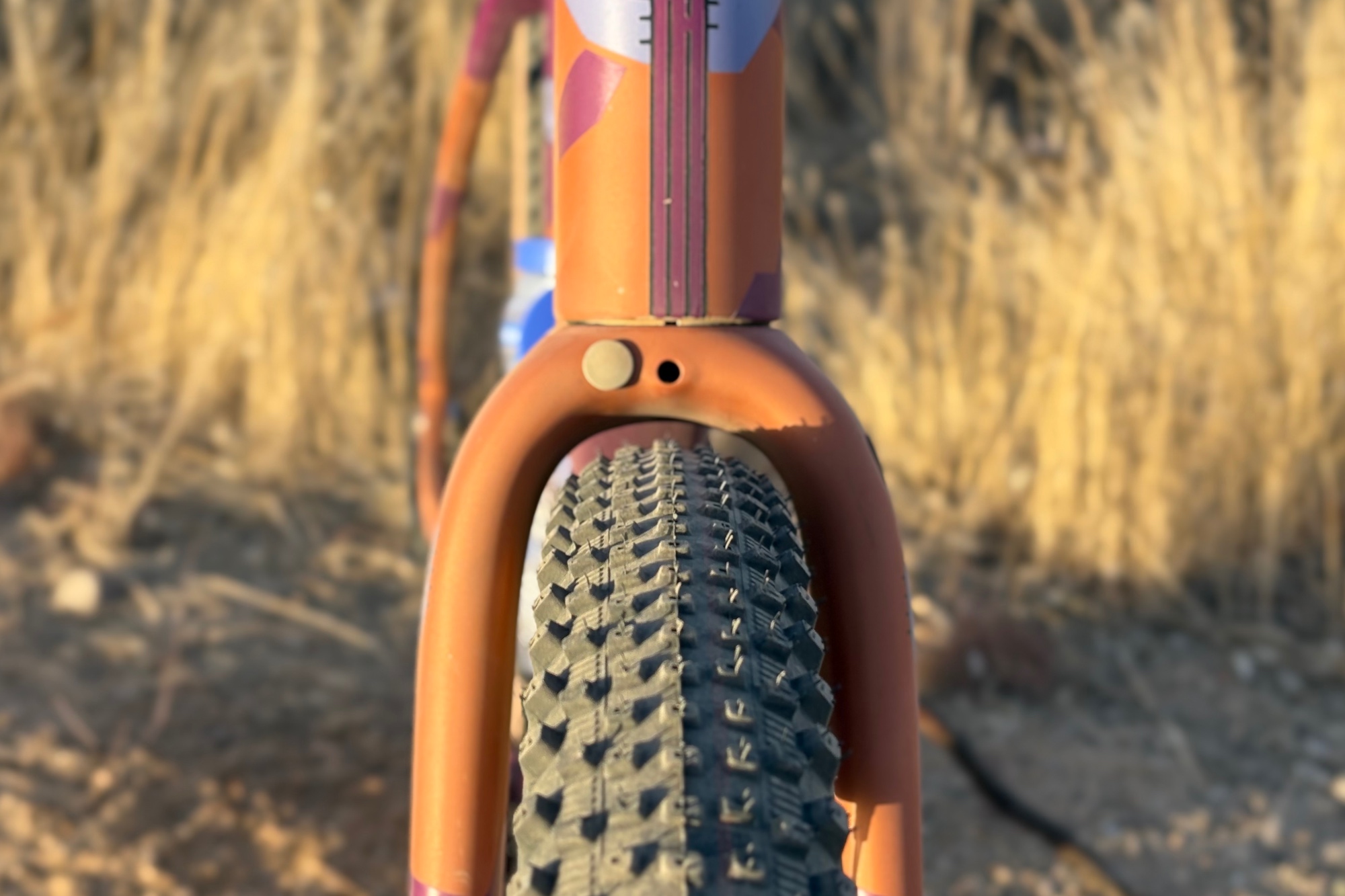
(Image credit: Logan Jones-Wilkins)
The Ride
The Schwalbe Rick could easily slot into multiple categories. But this is where personal experience really matters. Riding the tyre here in Arizona has proven, with flying colours, that it’s best suited to the dry, loose terrain of the Sonoran Desert I call home. The Rick feels like Velcro and lightning rolled into one: Velcro in the turns, lightning in straight lines, and a go-to for desert gravel, even when plenty of pavement stands between you and the dirt.
Part of my love for this tyre comes down to my riding style. In Phoenix, most of my gravel bike miles are binary: long road stretches linking together light singletrack and sandy double-track. It’s a delicate balance that no tyre nails perfectly, but some get closer than others. Aerodynamics and rolling resistance obviously matter, but one factor that doesn’t get talked about enough is braking traction. With most semi-slicks—whether gravel-width or MTB-sized—that’s the weak spot.
Light side knobs and careful pressure can create grip in corners, but when it comes to stopping power, there’s no substitute for a proper centre tread. The trick is designing one that both bites and rolls fast. That’s exactly where the Schwalbe Rick sets itself apart: it balances speed with reliable traction across braking, cornering, and loose surfaces.
If the ride includes any technicality at all, the Rick is hands down the tyre I want to be on. Out of all the options I tested, it’s the best at bridging the gap between gravel and mountain biking—while only giving up a little speed on pavement compared to far less capable tyres.
Verdict
If there is any technicality, the Rick is far and away the tyre I want to be riding. Of all the options tested, it is the best at bridging the gap between gravel and mountain biking.
Maxxis Aspen ST
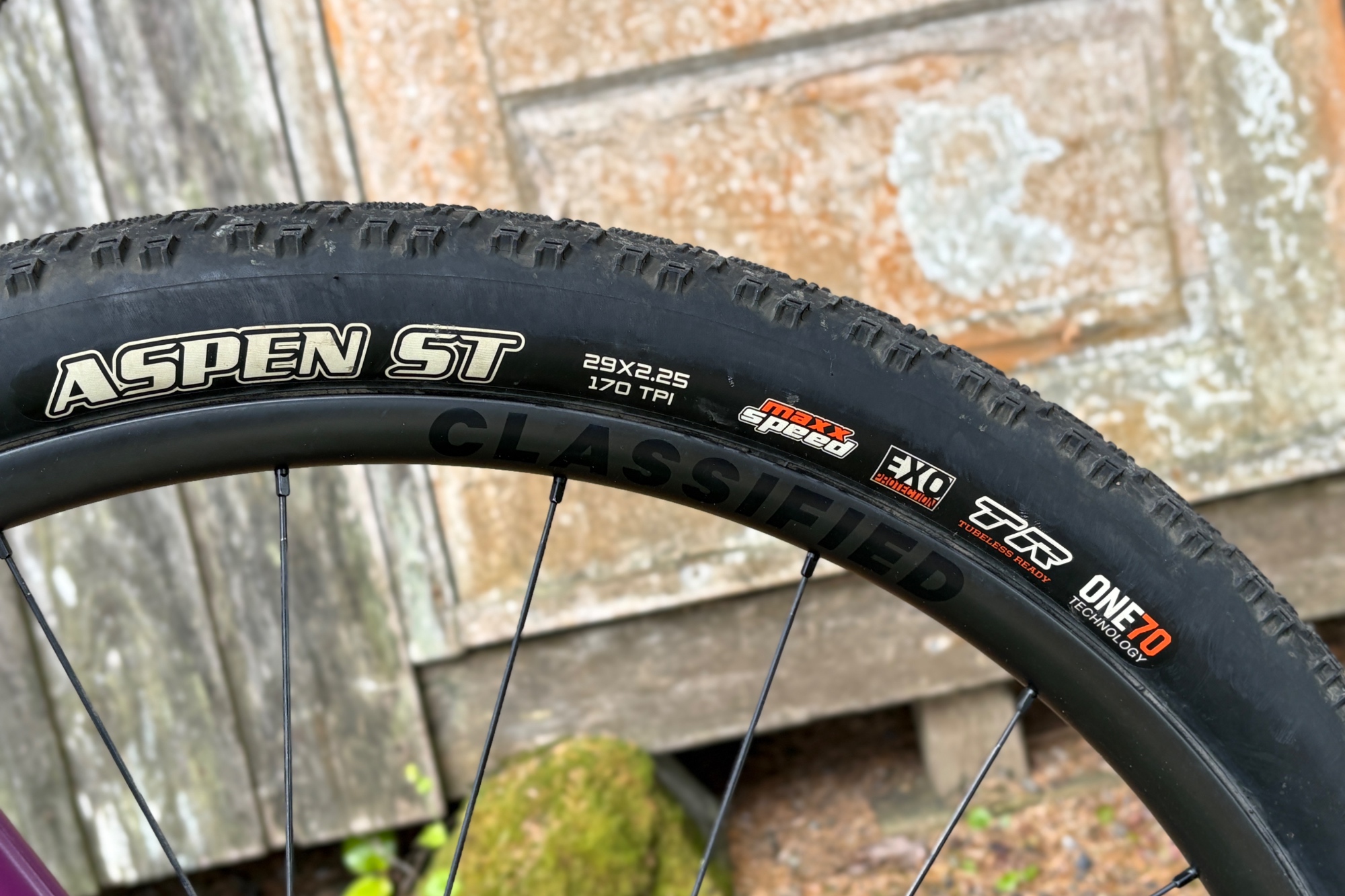
(Image credit: Logan Jones-Wilkins)
The Ride
The Maxxis Aspen ST is about as close to a slick tyre as you’ll find on this list. It runs a faint file tread down the centre with short side knobs that, at first glance, look like they’d offer minimal traction. My initial impression was that it excelled at straight-line speed and light gravel—but not much else.
After a few weeks of riding, though, I found the Aspen ST to be surprisingly versatile across a wide range of surfaces and moisture conditions. The secret lies in the rubber.
Built with a pure racing construction and high TPI casing, the Aspen ST was never meant for the general market. It was originally designed for Maxxis athletes, given its narrow use case in mountain bike racing. But after consistent success, most notably with riders like Keegan Swenson, who has raced them everywhere from short-track MTB events to Unbound Gravel, Maxxis decided to release it to the public last summer.
As you’d expect from a pro-level tyre, the Aspen ST demands precision in setup. Its optimal pressure window is narrow: too high, and traction vanishes; too low, and it feels unstable in corners and prone to rim strikes. But dial it in just right, and the Aspen ST transforms into a phenomenal all-rounder, capable of handling everything from wet pavement to Unbound’s famous flint gravel.
Verdict
As an offering formulated for pros, the Aspen ST has a very small window of optimal tyre pressure that requires some fine-tuning. Yet, find the right balance and the Aspen ST becomes an incredible all-around tyre.
René Herse Fleecer Ridge
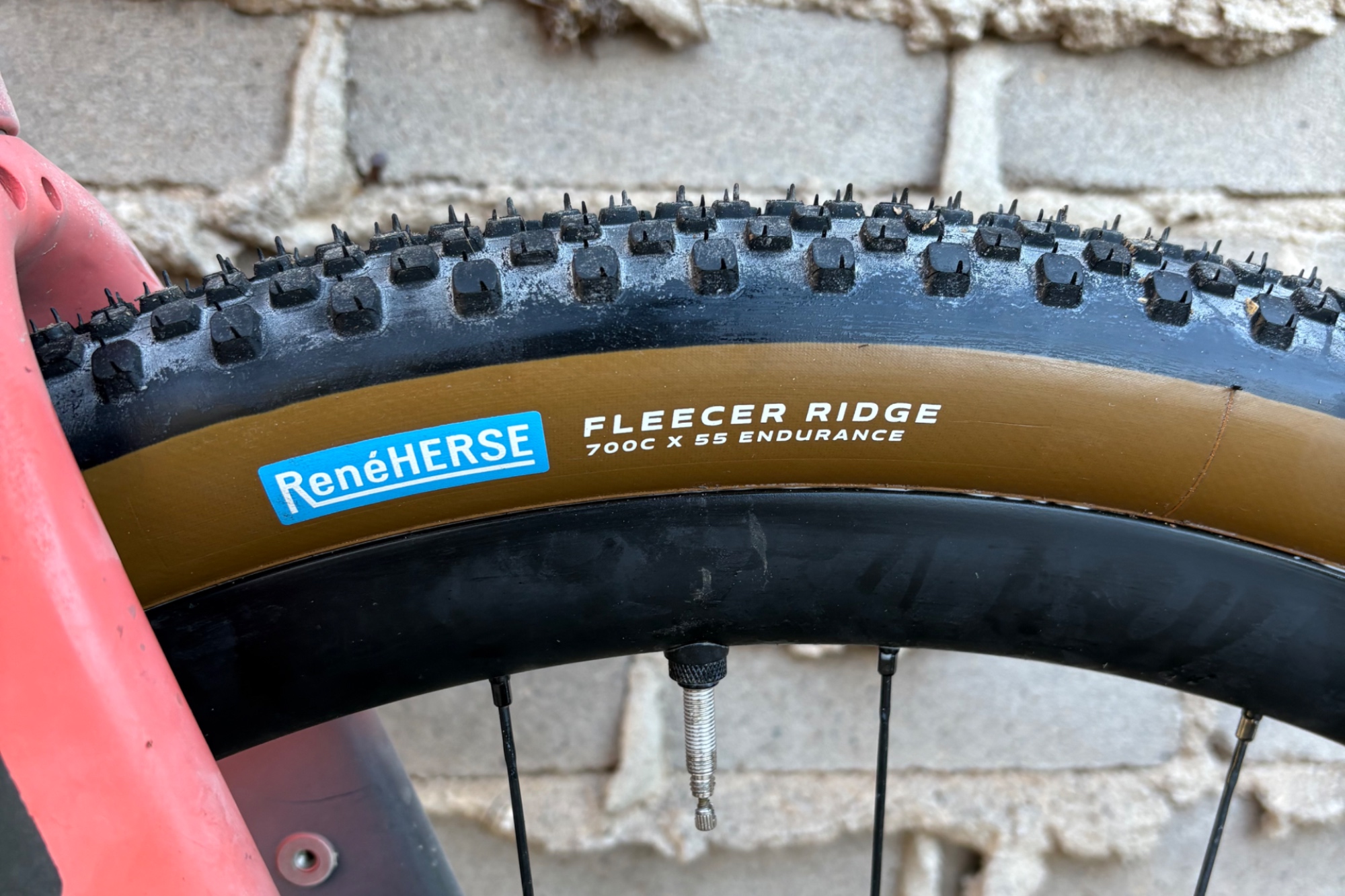
(Image credit: Logan Jones-Wilkins)
The Ride
In wet terrain, there is no replacing the importance of elevated knobs. Digging into the dirt is necessary, and it is not done through semi-slick centre patches and slimmed-down sidewalls. Predictably, the tyre forged in the Pacific Northwest is well-suited for more moist dirt riding.
I tested René Herse’s Fleecer Ridge in the Endurance Casing construction, the third heaviest of the tyre’s options. The tread pattern is the same as all the Rene Herse knobby patterns, with evenly spaced, squared knobs that reduce road buzz, boost rolling resistance, and provide more traction than semi-slicks. The Fleecer Ridge does a commendable job at those objectives; however, on dry mixed terrain, it lacks the other, lower-profile tyres.
When the terrain gets wet, this tyre begins to excel. The tyre is predictable under braking, cornering, and handles low pressure well. Although the knob profile may seem overkill for most gravel riding, it can be a lifesaver on a wet day. Rene Herse is also a great option if you are just under the clearance capacity of a 2.25 tyre. The brand carries the same casing and tread pattern in 48mm with the Oracle Ridge.
Verdict
The Fleecer Ridge is predictable under braking, cornering and handles low pressure well. While the knob profile may seem overkill for most gravel riding, it can be a lifesaver.
Schwalbe Thunder Burt
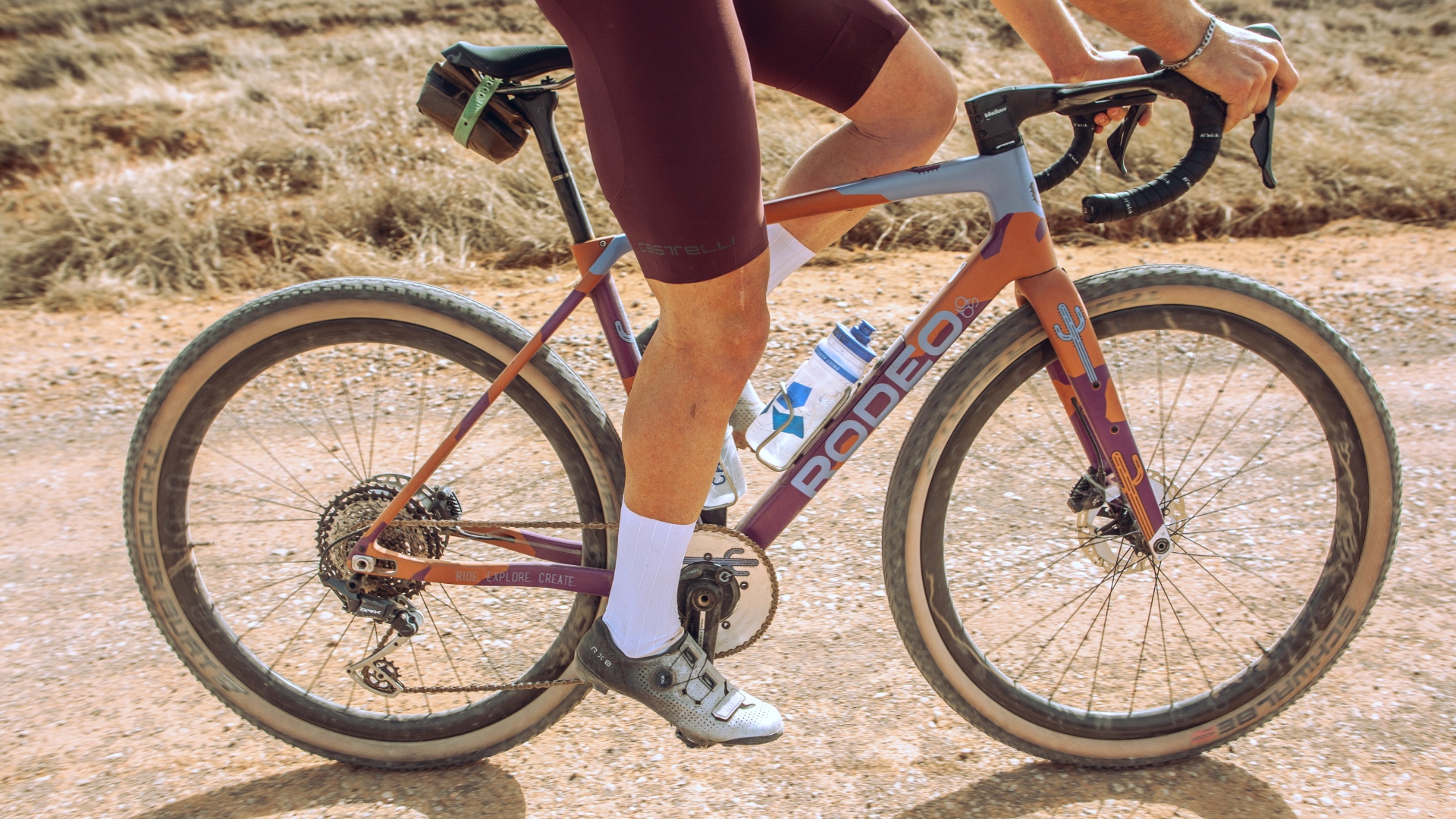
(Image credit: Logan Jones-Wilkins)
The Ride
The difference in feel between mountain bike tyres and gravel tyres tends to be immediate and substantial. Just ten millimetres of added volume can alter everything from the bike height to the trail figure of the front end. Wider tyres also allow for lower pressures, which smooths out the ride but can also mute some of the feedback skilled riders rely on to sense their traction limits. These trade-offs cut both ways, but sometimes nothing beats the direct connection to the ground you get from a 45mm, lightly treaded gravel tyre.
Among all the tyres I tested, the Schwalbe Thunder Burt came closest to delivering that classic gravel-tyre feel. It was easily the most comfortable choice on standard gravel roads and the clear pick for an event like Midsouth Gravel. Although that race was ultimately cancelled due to wildfires, I’d never felt more confident in my tyre choice across my four editions.
The Thunder Burt is undeniably fast, holds steady across a range of pressures without diving in turns, and carries enough tread to carve through corners littered with small rocks and loose dirt at speed. It’s not the tyre for mud, but when conditions are dry and gravel is the name of the game, it’s a pro favourite for good reason.
Verdict
Out of all the tyres tested, the Thunder Burt feels most like a classic gravel tyre and the most comfortable over standard gravel roads. It’s undeniably fast, while handling cornering admirably; however, it is not one for wet days.
Ultradynamico Mars Race
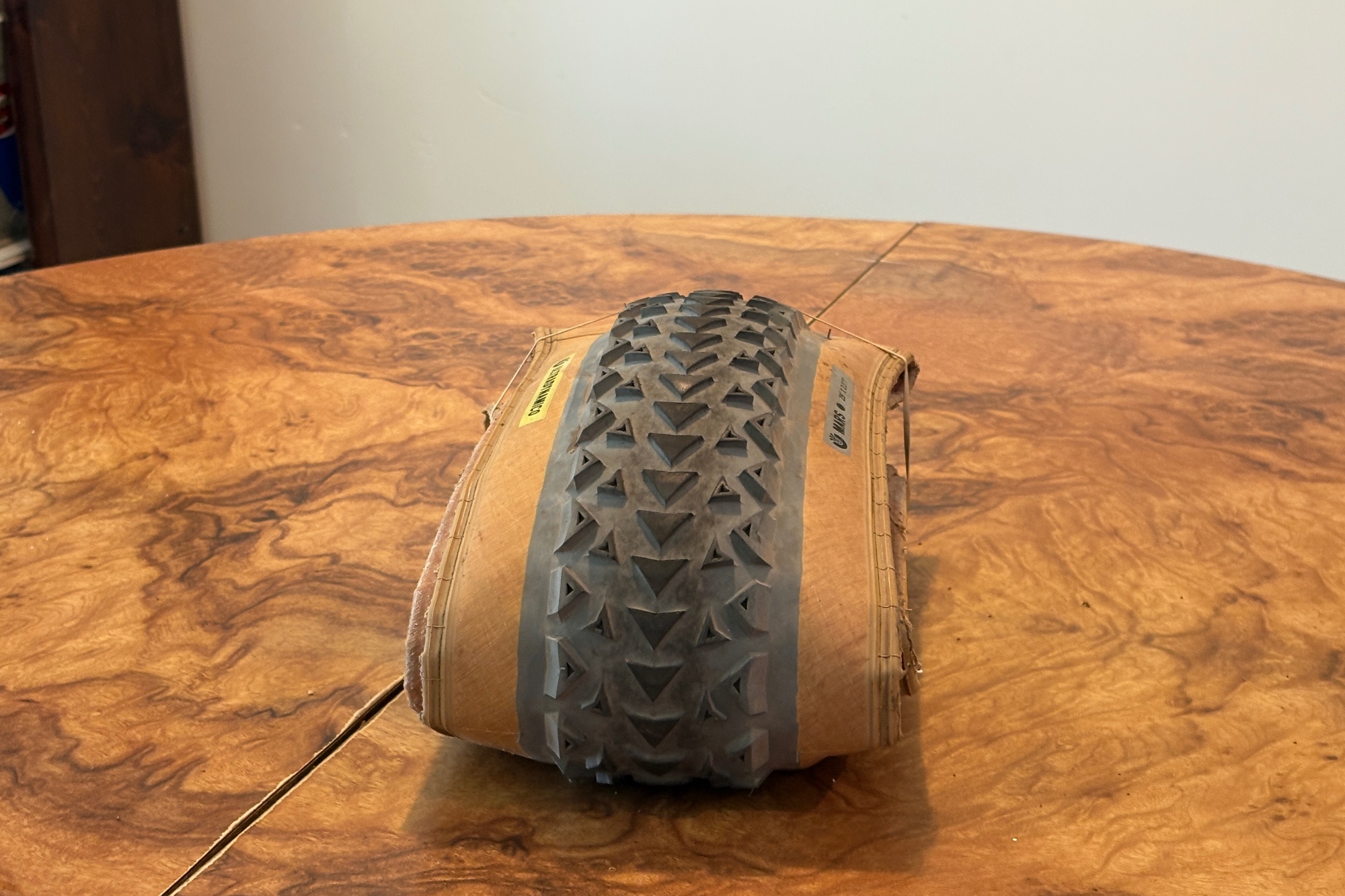
(Image credit: Logan Jones-Wilkins)
The Ride
Bikepacking presents a unique challenge when it comes to tyre choice. Unlike racing, where I typically optimise my tyre choice for performance gains, the priority here is risk management. Too bulky, and road sections become a grind. Too light on treads, and traction suffers under added weight. Too light overall, and flats can quickly ruin a trip.
On a recent trip from Flagstaff, Arizona, to my home in Phoenix, I was faced with these concerns while also stuck in the midst of this test. That was the perfect chance to weigh a bunch of different options and find the right tyre. Ultimately, what I settled on was the Ultradynamico Mars tyre, a unique option with several distinct upsides for the challenge.
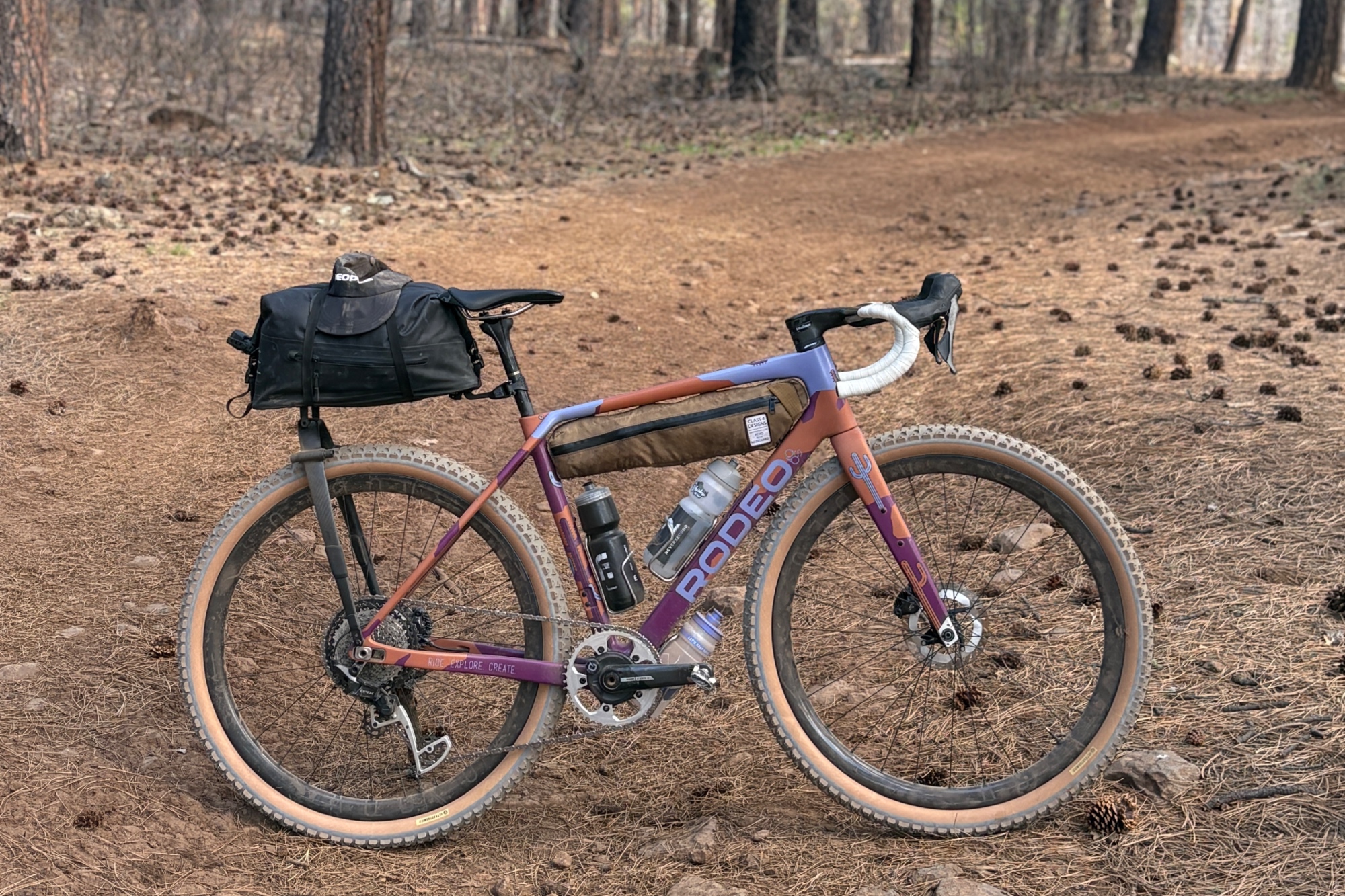
(Image credit: Logan Jones-Wilkins)
Ultradynamico is a tyre brand from Ronnie “Ultra” Romance, a culture-first cyclist, and long-time proponent of wide tyres on rigid drop bar bikes. As the big-tyre revolution has swept through the gravel world, Ultradynamico jumped in the mix with the race-oriented Mars tyre. Measured at 2.25 inches with massive triangular elevated knobs, including a strong centre profile, the tyre could work for a gravel race, but is a bit overkill for most gravel races. Lighter tread patterns simply work better over most surfaces you would see in even the biggest gravel races.
The larger knobs perform best at higher pressures and on rough terrain, while their profile still offers better pavement performance than other high-knob tyres. These traits make them particularly well-suited for bikepacking, where extra system weight and the need for greater puncture resistance call for higher pressures. Unlike many tyres, the Mars maintains strong traction and handling even when inflated to higher levels. For this reason, I’d place the Mars in the same category as the Vittoria Mezcal, a proven favourite among bikepackers.
Verdict
The Mars profile offers better pavement performance than other high-knob tyres, which makes it particularly well-suited for bikepacking, where extra system weight and the need for greater puncture resistance call for higher pressures.
Missing in action – Continental Dubnital
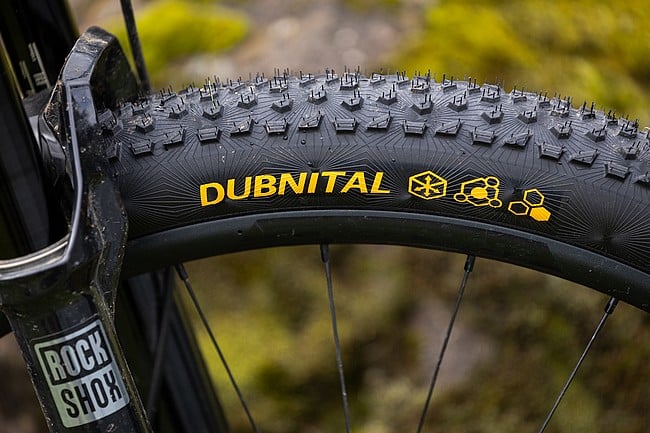
(Image credit: Continental)
The big tyre that many of you might have been hoping to see on the list is, unfortunately, the one option we were not able to test: the Continental Dubnital. After months of waiting and after we completed the rest of the testing, the Dubnital remained out of stock in the right rubber compound and width to compare with the other top-flight options.
The Dubnital is the updated version of the popular Continental Race King —the tyre that marked the beginning of the big tyre movement. The tyre that Dylan Johnson rode to a top-ten finish at Unbound Gravel in 2024, before demonstrating in a wind tunnel its efficiency over gravel tyres. However, with the Race King showing its age, an update was overdue, especially as Schwalbe, Vittoria and Maxxis continue to push innovation forward.
The good news is I now have a set! The bad news is I had to go and buy them with my own money just to get some time on them. So, as soon as I have put them through their paces, I’ll write a full review here for Cycling Weekly.
How I tested
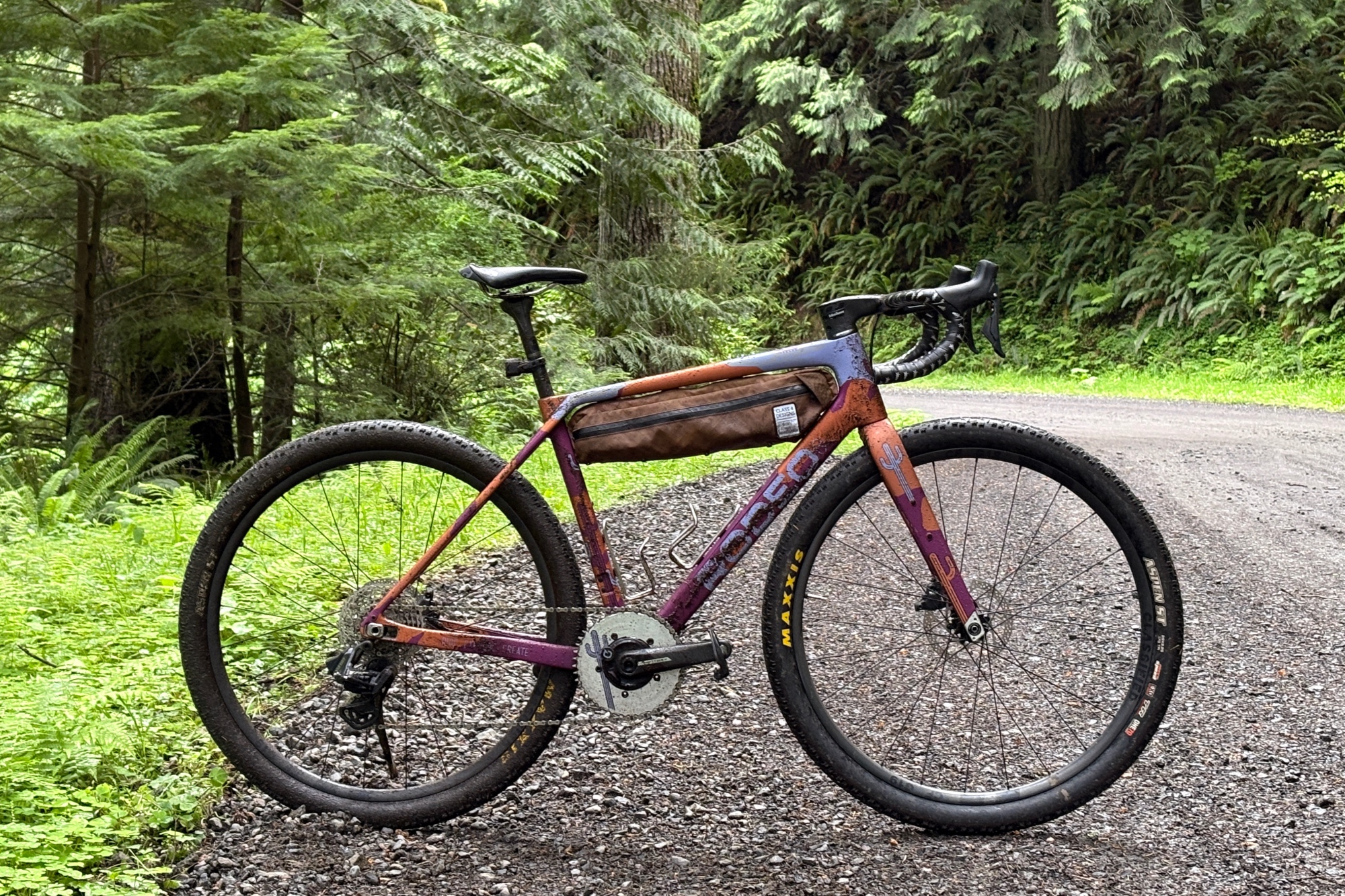
(Image credit: Logan Jones-Wilkins)
With Karrasch dedicating his work to measuring the pure speed of these tyres, we felt it best to let his numbers stand on their own and instead focus on the other qualities that matter. After all, even the fastest tyre isn’t worth much if it lacks puncture protection, can’t perform at low pressures, or struggles with traction. After testing a dozen sets, I’d argue speed alone is not enough—especially given the price of tyres today.
That’s not to dismiss speed; it remains a key factor. But we aren’t here to be the definitive judge of it. Instead, we’ll consider it alongside the more subjective elements of my testing.
What I can say with confidence is that after a year of riding in every imaginable condition, the six tyres featured here proved themselves capable of meeting the wide-ranging demands of off-road riding, each logging over 300 miles of use. Other tyres were tested but didn’t make the cut, as only a select few stood out in at least one category.
In total, this guide represents thousands of miles and a year of testing—an effort to show what the “big tyre” gravel revolution truly means. It’s designed for riders ready to make the leap: to refine their preferences, make informed choices, and discover the limits of this new blend of speed and compliance.
Logan Jones-Wilkins
Conclusions
If you’re thinking of running MTB tyres on your gravel bike, like me, read my full breakdown on what I learnt after 12 months of testing. If you would like to stay here, here is an abridged version.
I think we all saw this moment coming, as gravel courses became more demanding, races and riders got faster, there was always going to be a tipping point to where MTB tyres at least came into play; however, given the findings of John Karrash with the Chung method and the top-level athletes, it seems now we just need to go the whole hog. From my rather more subjective point of view, bigger tyres offer great comfort and ultimately, the bigger, gripper tyres mean you can just have a bit more fun.
There are, however, significant differences between the tyres I tested, unlike those of the best gravel tyres. So, while I found you might need to be specific about your compromises, the distinctions between models are much clearer by a long way.
It’s worth noting this is just the start of the change, while a number of brands offer large tyre clearances (up to 50mm) and even then thats tight for many. The best gravel bikes will need massive redesigns to take 55mm and up, similar to that of the new Diverge 4.
